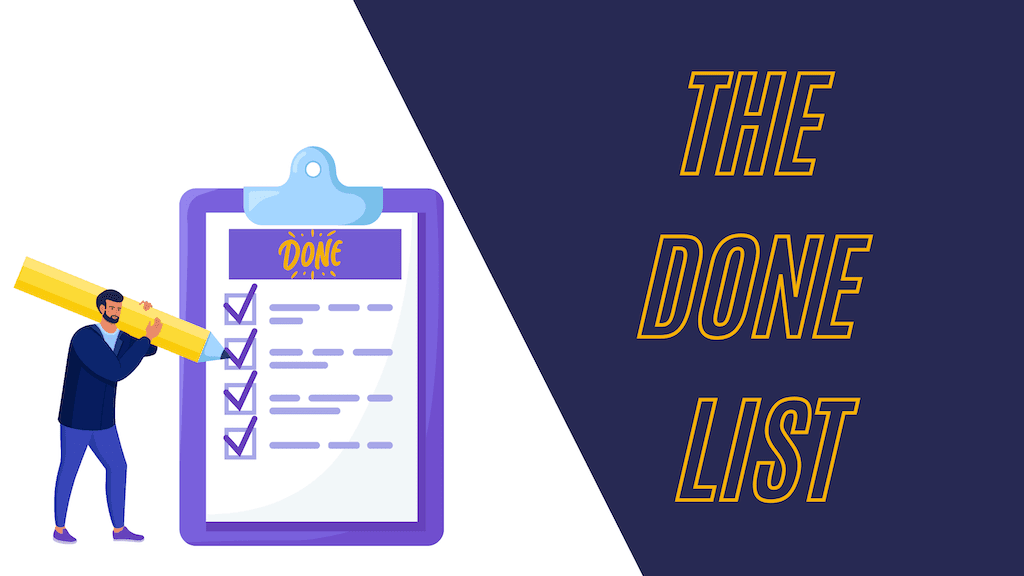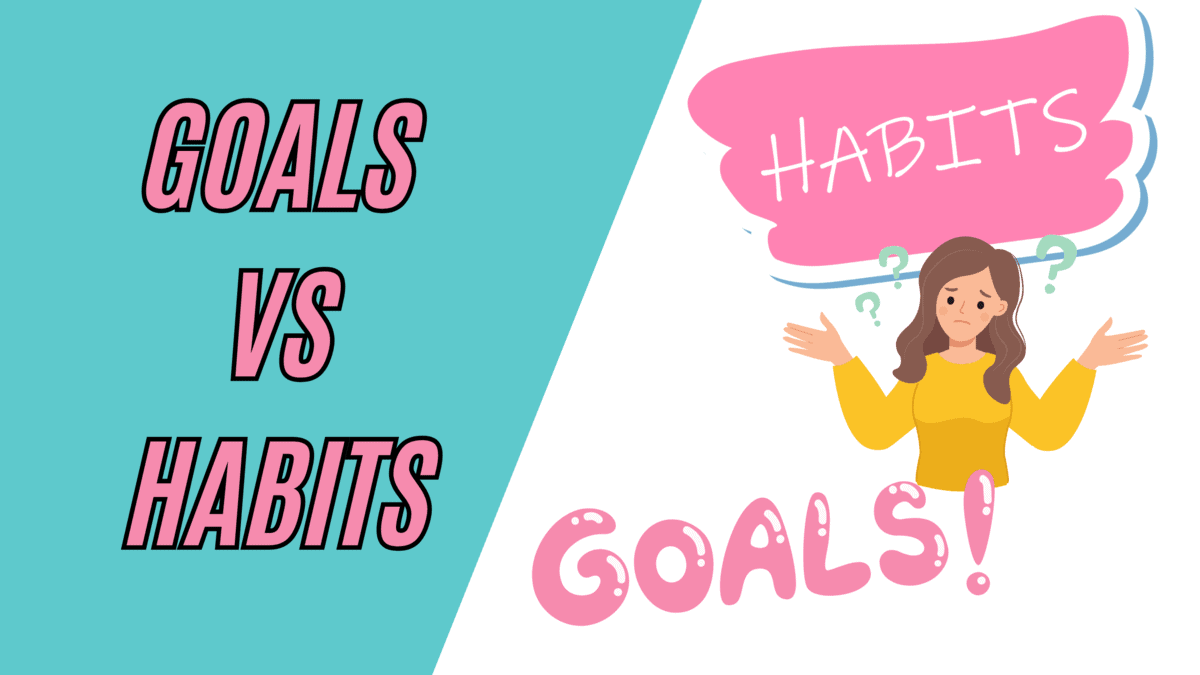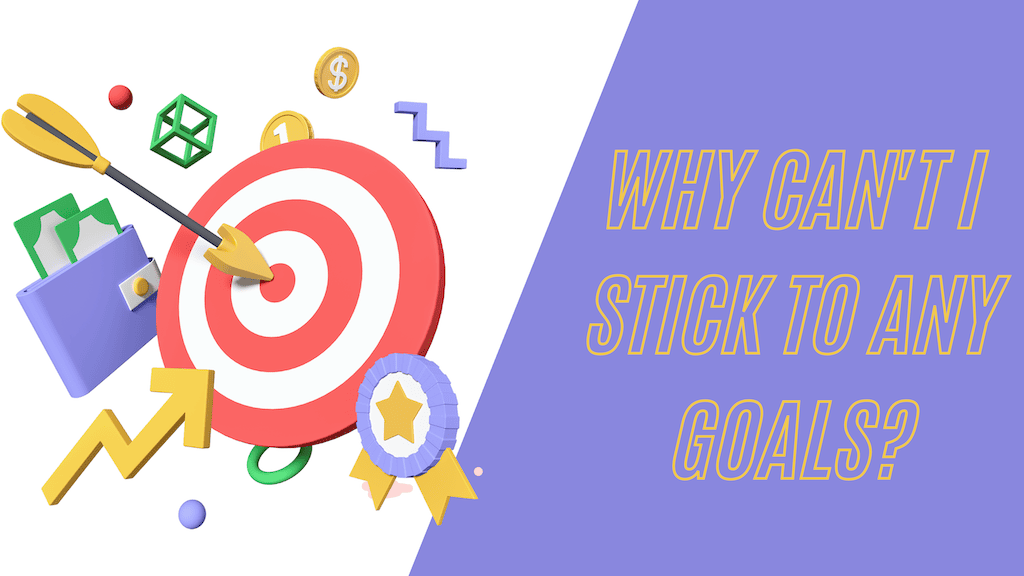Are you tired of the same old to-do lists that never seem to end?
Or you’ve been working hard all day…only to realize you haven’t actually ticked a single thing off that list?
We’ve all been there. And it can be disheartening. Making us want to throw that list straight in the bin.
But what if we told you there’s a way to flip the script on productivity and start celebrating your accomplishments instead?
Enter the “Done List” – a powerful tool designed to help you gain self-awareness, reflect on your achievements, and boost your overall well-being.
What Is a Done List?
A Done List, often referred to as a “Done List”, “Have Done List”, “To-Done List” or “Got-Done List” is essentially the opposite of a traditional to-do list.
Instead of focusing on tasks that need to be completed, a Done List highlights the tasks you’ve already accomplished.
Its primary purpose is to provide a comprehensive overview of your progress, allowing you to celebrate your achievements and maintain a positive mindset.
Should I Use a Done List or a To-Do List?
Don’t get me wrong, – I couldn’t live without my to-do list. I’d be completely lost on what I need to work on next.
And it goes without saying that the traditional to-do list has long been a staple in the world of productivity. However, despite its usefulness, it’s not without its flaws.
For one, to-do lists often focus on what’s left to be done rather than what’s already been accomplished. This can lead to feelings of overwhelm and discouragement, making it difficult to maintain motivation and momentum.
Also, to-do lists don’t necessarily provide a complete picture of your progress, potentially leaving you feeling unfulfilled and unsatisfied.
Now, imagine a world where you could harness the power of a “Done List” to fuel your motivation and productivity.
By focusing on the tasks you’ve already completed, you’re able to see just how much progress you’ve made throughout the day, week, or month. This shift in perspective can work wonders for your personal growth, productivity, and well-being.
Now, should you replace your to-do list with a Done List?
Absolutely not.
You should, however, consider adopting it into your arsenal of personal development tools to be used alongside the traditional To-Do List.
What Are the Key Benefits of a Done List?
So, you might be wondering “What are the key benefits of using a Done List?”
The benefits of a done list can be broken down into immediate and long-term benefits.
Immediate Benefits
Feeling grounded and productive: By focusing on what you’ve already accomplished, you can gain a sense of stability and purpose in your daily routine.
It provides motivation and a productivity boost: When you can see everything you’ve achieved, it’s easier to keep the momentum going and tackle the next task with enthusiasm.
It offers a tangible sense of accomplishment: Which can do wonders for your mental well-being and self-esteem.
Long-Term Benefits
Revisiting the list when motivation is low: When you find yourself struggling to maintain momentum, your Done List serves as a reminder of your past achievements and a source of inspiration to keep pushing forward.
Tackling imposter syndrome: Regularly reviewing your accomplishments can help combat feelings of self-doubt and inadequacy, reinforcing your belief in your own abilities.
Recognizing patterns in accomplishments: Analyzing your Done List can reveal trends in your productivity, helping you understand what works and what doesn’t – enabling you to optimize your approach moving forward
Focusing on progress: By concentrating on your achievements rather than your setbacks, you’ll foster a growth mindset that encourages continuous learning and self-improvement.
The Power of Reflection and Recognition

When it comes to productivity and personal growth, recognizing and reflecting on our accomplishments can be just as important as setting goals and planning tasks.
By shifting your perception of obstacles and celebrating your achievements, you can foster a positive mindset that propels you forward.
A key component of this process is reflection. Taking time to journal progress allows you to gain valuable insights into your strengths, areas for improvement, and the factors that may be holding you back.
Instead of viewing obstacles as insurmountable barriers, you can turn them into challenges to be conquered, creating opportunities for growth and learning.
This mindset shift makes all the difference in your journey toward achieving those long-term annual, quarterly, and monthly goals.
Recognizing your daily wins, big or small, has numerous benefits that contribute to our overall well-being. For one, it boosts your motivation and confidence – Harvard Business Review carried out a study that found that recognition of even minor milestones has a positive impact on emotions and motivation.
Celebrating our accomplishments leads to improved happiness and well-being. By focusing on the positive aspects of our lives, we’re better equipped to cultivate gratitude, reduce stress, and enhance our overall mental health.
When we see the progress we’re making, we’re more likely to believe in our abilities and stay committed to our goals. This helps us tackle new tasks with greater enthusiasm and determination.
Creating a Done List
If you’re ready to harness the power of reflection and recognition, it’s time to dive into the world of Done Lists.
Let’s explore how to create a Done List, and how to use it effectively to boost your motivation and productivity.
Creating a Done List is simple and straightforward. Just follow these 3 steps:
Step 1: Every day, write down your accomplishments and the tasks you’ve completed. This can be done in a dedicated notebook, a digital document, or a productivity app – whichever method works best for you.
Check out our article on the power of putting pen to paper, and physically writing things down.
Step 2: Date each task to track your daily progress. This will help you visualize how much you’ve achieved over time and identify any patterns or trends in your productivity.
Step 3: Be sure to include even the smallest tasks for a complete overview of your progress. Don’t shy away from listing minor achievements, as they can contribute to your overall sense of accomplishment and well-being.
Pretty easy right? And the whole process shouldn’t take longer than 5 minutes every day.
If you use a digital to-do list like me (I use Notion) – there’s usually a way to view tasks that have been marked as complete.
This is a quick and easy way to see at the end of every day the tasks you completed, then you just need to add any other accomplishments that weren’t marked out on your to-do list.
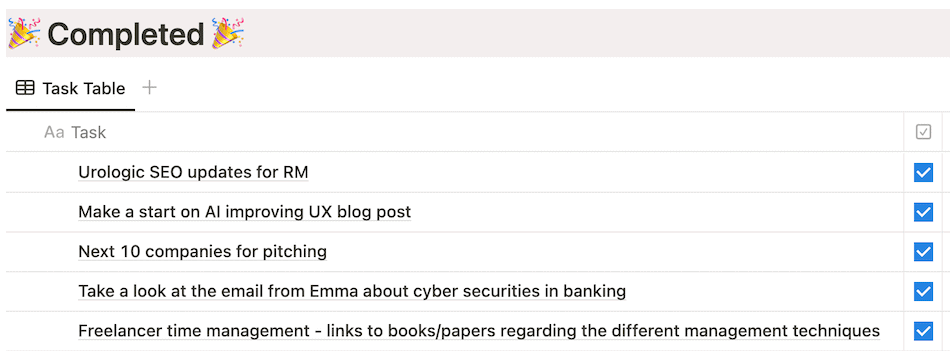
Reflecting on and Analyzing Your Done List
Once you’ve established the habit of writing a Done List, the next critical step is to take the time to reflect and analyze the information it provides.
It’s no good spending time on your done list if you don’t use it to gain deeper insight into your progress and personal growth.
To make the most out of your Done List, here’s a list of questions to ask yourself when going through it:
Q1. What are my strengths and areas for improvement?
Use your Done List to identify which tasks you consistently excel at and which ones present more of a challenge.
Q2. What should my priorities be for future tasks?
By examining your accomplishments, you can determine which tasks align with your goals and should be prioritized moving forward.
Q3. What emotions are tied to my accomplishments?
Reflect on how completing certain tasks made you feel, and consider how those emotions may influence your motivation and approach to future tasks.
Q4. What tasks took longer than others?
By reflecting on the tasks that took longer than expected or were frequently interrupted, you can start to identify common distractions and work on preventing them in the future.
Q5. What was my biggest and smallest achievement of the day?
The whole Done List concept revolves around acknowledging achievements no matter how big or small. A critical part of reviewing your Done List is to ask yourself what those achievements are.
By regularly reflecting on and analyzing your Done List, you’ll not only enjoy the immediate and long-term benefits it offers, but you’ll also gain valuable insights into your personal growth and productivity journey.
Some Tips for Implementing The Done List Into Your Workflow
Combining Done Lists with Other Productivity Techniques
While Done Lists are a powerful tool for boosting productivity on their own, integrating them with other popular productivity methods can further enhance their effectiveness.
Done Lists and the Pomodoro Technique
The Pomodoro Technique involves breaking your work into focused intervals, usually 25 minutes long, followed by a 5-minute break. This method helps maintain concentration and prevent burnout.
By combining the Pomodoro Technique with your Done List, you can track the number of Pomodoro sessions it took you to complete a task, providing a clear view of your productivity and time investment.
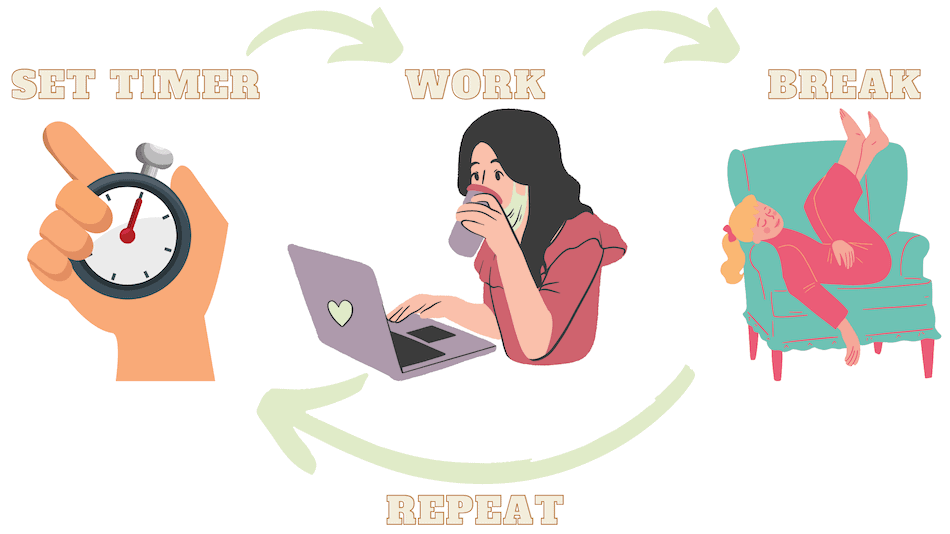
Done Lists and Time-Blocking
Time blocking involves dividing your day into blocks of time, each dedicated to a specific task or category of tasks.
By incorporating Done Lists into your time-blocking routine, you can track your completed tasks within each time block, enabling you to evaluate the effectiveness of your schedule.
Done Lists and the Eisenhower Matrix
The Eisenhower Matrix is a prioritization tool that categorizes tasks based on their urgency and importance.
By integrating Done Lists with the Eisenhower Matrix, you can track your progress in addressing tasks across all categories, ensuring a balanced approach to productivity.

How to stay consistent with your Done Lists
As we’ve discussed, creating and maintaining a Done List can bring numerous benefits to your productivity and well-being.
However, it’s essential to stay consistent with the practice to reap its full benefits. Here are some practical tips that will help you achieve consistency:
Set reminders
To ensure you update your Done List regularly, set reminders throughout the day or at specific times when you’re likely to complete tasks.
Use digital tools like calendar apps or smartphone notifications, or even simple physical reminders like sticky notes, to prompt you to add completed tasks to your Done List.
Create a routine
Establishing a routine for updating your Done List can make it easier to stay consistent.
Adding a task to an already-established routine is one of the best ways to formulate new and consistent habits.
For example, you might choose to update your list after lunch, or just before finishing your work day. Find a time that works best for you and make it a daily habit.
This is a recommendation by James Clear in his book Atomic Habits. Which, if you haven’t read it, I highly recommend you do. It changed my whole outlook on the concept of building good or breaking bad habits.
Find the right motivation
Understanding the personal benefits of maintaining a Done List can serve as powerful motivation to stay consistent.
Remind yourself of the increased productivity, self-awareness, and sense of accomplishment that comes from tracking your achievements. Visualize your long-term goals and recognize how your Done List contributes to your progress.
Keep it simple and accessible
Make your Done List easy to update by keeping it simple and accessible.
Use a format that works best for you, whether it’s a digital app, a notebook, or a whiteboard. Having your Done List readily available will encourage regular updates and help maintain consistency.
Track your consistency
Monitor your commitment to maintaining your Done List by tracking the number of days you successfully update it.
You can use a simple tally system, a habit-tracking app, or even The Seinfeld Strategy where you use a calendar to mark off each day you’ve updated your list. This visual representation of your consistency can serve as motivation to continue the habit.
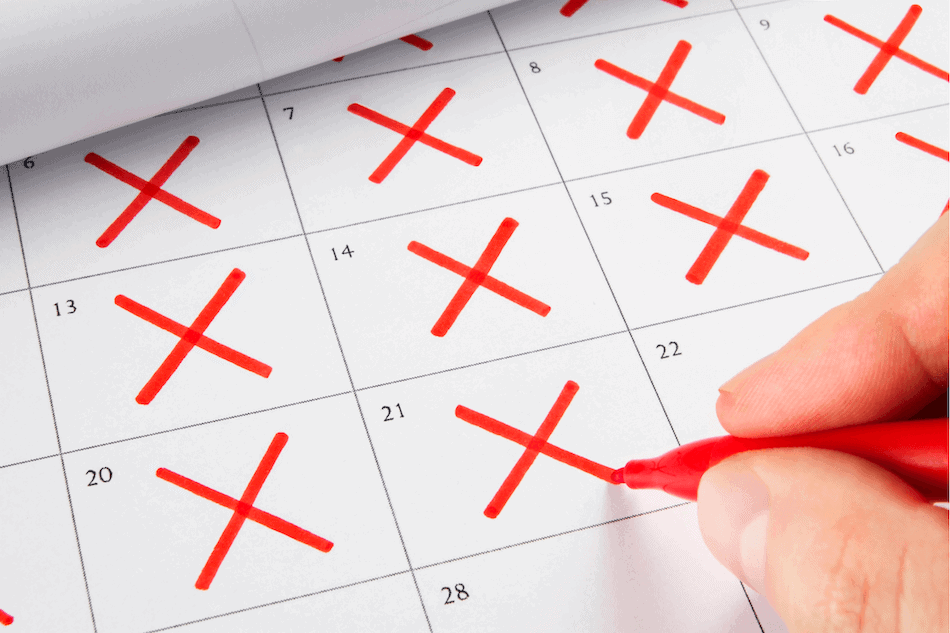
Share your progress
If you find it helpful, consider sharing your Done List progress with a friend, family member, or colleague. This added layer of accountability can inspire you to stay consistent and provide an opportunity to celebrate your accomplishments together.
By following these practical tips, you can make maintaining a Done List a long-term habit that supports your personal growth, productivity, and overall well-being.
Done List FAQs
A Done List is a record of tasks and accomplishments you’ve completed throughout the day, serving as a tool for self-awareness, reflection, and motivation.
While a To-Do List focuses on tasks you need to complete, a Done List emphasizes tasks you’ve already finished, providing a sense of accomplishment and progress.
A Done List can boost your motivation, help you track your progress, and give you a sense of accomplishment, all of which contribute to enhanced productivity.
To create a Done List, simply write down your completed tasks throughout the day, date each entry, and include small tasks for a comprehensive overview of your progress.
Yes, you can integrate a Done List with other productivity methods like the Pomodoro Technique, time blocking, or the Eisenhower Matrix to maximize their effectiveness.
To stay consistent with your Done List, set reminders, create a routine, find the right motivation, keep it simple and accessible, track your consistency, and share your progress with others.
Perspective time is a dedicated period during your day for assessing your tasks, goals, and progress with a big-picture mindset. It can help reduce distractions, improve focus, and create more time for activities you enjoy.
Review your Done List for tasks that took longer than expected or were frequently interrupted, then brainstorm solutions to prevent future interruptions, such as closing your office door or setting specific time blocks for tasks.

